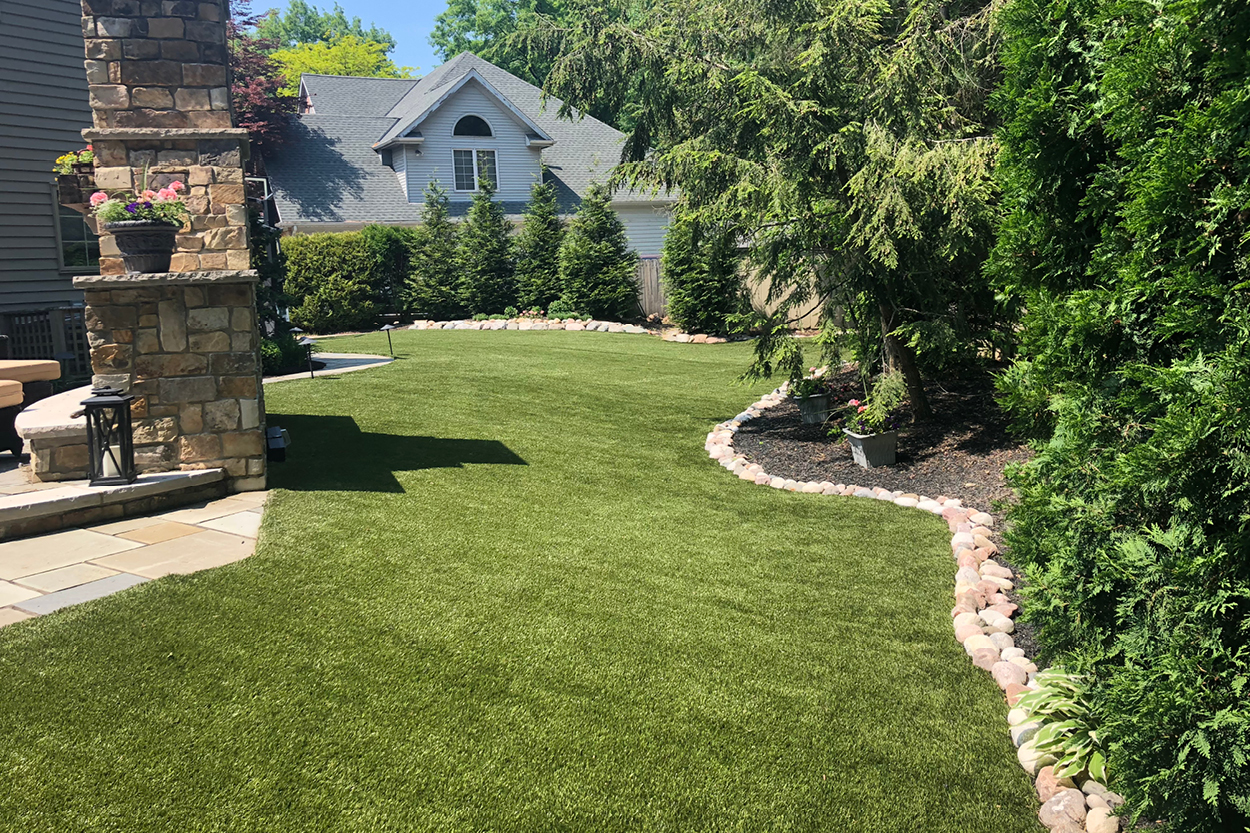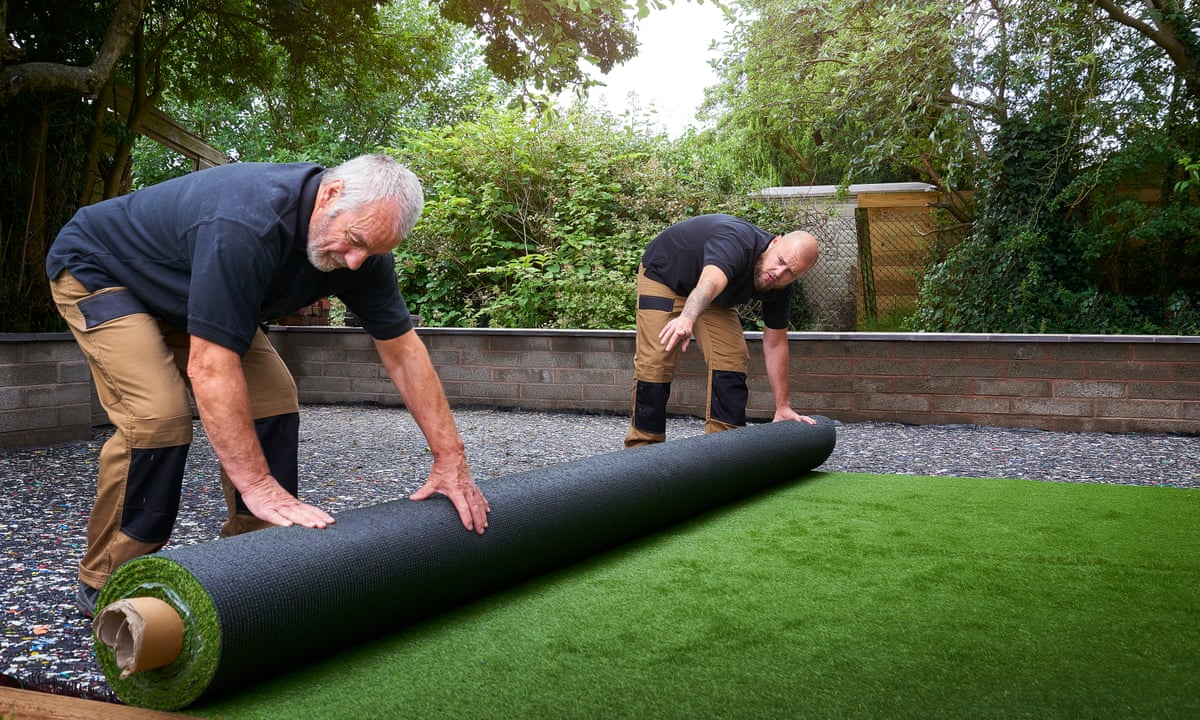Explore the Environmental Conveniences of Opting for Synthetic Grass Solutions
The fostering of man-made lawn solutions presents a compelling opportunity to deal with pushing ecological difficulties. By substantially decreasing water usage and reducing the application of damaging chemicals, these alternatives not just promote lasting landscape design but additionally secure local communities. Moreover, the reduced carbon footprint connected with decreased upkeep activities adds to a much more lasting technique to land management. Nonetheless, the implications of these advantages extend past plain conservation initiatives, raising concerns about their long-lasting influence on habitat conservation and overall environmental equilibrium. Discovering these dimensions exposes a complicated interaction worth thinking about.
Water Preservation Advantages
One of the most significant benefits of artificial turf is its ability to conserve water. In comparison, fabricated lawn does not require watering, substantially lowering the overall demand for water sources.
By removing the demand for routine watering, artificial grass contributes to lasting landscape practices and assists mitigate the ecological influence of extreme water intake. Additionally, the conservation of water encompasses the decrease of runoff, which can cause dirt erosion and river pollution.
In addition, the setup of synthetic grass allows communities and property owners to assign water sources extra effectively, concentrating on essential uses such as drinking water and farming. The change in the direction of artificial turf not only promotes liable water use but likewise lines up with more comprehensive ecological objectives targeted at maintaining natural deposits.
As communities progressively focus on sustainability, the water conservation benefits of man-made grass offer an engaging instance for its fostering in business and residential landscaping projects.
Reduced Chemical Usage
The transition to synthetic grass significantly decreases the reliance on chemical therapies generally used in natural turf maintenance. Traditional turf management generally involves the application of herbicides, fertilizers, and chemicals to promote growth and control pests. These chemicals can posture threats to human wellness, regional wildlife, and the setting, adding to soil and water contamination.
In comparison, synthetic turf removes the need for these unsafe materials. By lessening the release of artificial compounds into the ecological community, synthetic lawn promotes much healthier dirt and water systems.
Furthermore, the lack of chemical overflow associated with man-made lawn installations assists protect regional rivers from pollution, sustaining aquatic life and preserving biodiversity. Arizona turf. As communities progressively focus on lasting practices, selecting synthetic grass provides a sensible service that lines up with ecological preservation objectives. Through this shift, homeowner can appreciate lush green areas without endangering eco-friendly health, leading the way for a much more sustainable future
Reduced Carbon Impact

Additionally, the setup of synthetic grass can result in considerable water preservation. All-natural lawns require significant quantities of water for watering, which not just includes in the carbon impact related to water extraction and treatment but likewise stress neighborhood water sources. On the other hand, synthetic grass needs minimal maintenance, requiring no watering, thus dramatically lowering water use and its special info associated energy prices.
Furthermore, the long life of synthetic grass adds to its lower carbon influence. With a life-span of approximately 15 years or even more, the requirement for frequent substitutes is reduced, leading to much less waste and lower power intake in production and disposing of conventional lawn alternatives. In general, synthetic grass offers a lasting option for environmentally conscious landscaping.
Environment Conservation
Environment preservation is a crucial factor to consider in the discussion over landscape design choices, especially when comparing fabricated lawn to natural lawn. All-natural turf yards frequently call for comprehensive maintenance, consisting of using fertilizers, chemicals, and herbicides, which can adversely influence local ecosystems. These chemicals can seep into the soil and rivers, harming indigenous flora and animals and interfering with local environments.
Synthetic grass eliminates the need for dangerous chemicals, thereby safeguarding close-by wild animals and keeping the honesty of bordering environments. The installation of artificial turf can lead to the conversion of previous lawn areas into more biodiverse landscapes, such as pollinator gardens or native plant locations, which can sustain neighborhood wild animals.
Eventually, the change to fabricated lawn not just preserves water and minimizes upkeep efforts however likewise fosters a more harmonious partnership in between human tasks and the a fantastic read all-natural atmosphere, advertising habitat preservation in the process.
Long-Term Sustainability
Lasting sustainability is an essential consider reviewing the benefits of artificial lawn over typical yard yards. One of the most substantial advantages of synthetic grass is its sturdiness; it can last as much as 15-20 years with marginal maintenance, whereas natural yard needs frequent reseeding and substitute. This durability decreases the demand for continuous sources, such as water, plant foods, and pesticides, which are crucial for preserving a healthy turf lawn.
Furthermore, synthetic grass contributes to a reduction in carbon discharges related to grass treatment tools. Standard lawns often call for gas-powered mowers, leaners, and blowers, every one of which contribute to air contamination. Arizona turf. On the other hand, fabricated grass removes the demand for such tools, promoting a cleaner atmosphere
Moreover, the production of fabricated lawn progressively makes use of recycled materials, improving its sustainability account. As producers embrace green practices, the environmental impact of synthetic grass proceeds to lessen.

Final Thought
The adoption of synthetic grass solutions offers considerable environmental benefits, including significant water conservation, lowered reliance on harmful chemicals, and a reduced carbon footprint. In addition, man-made turf aids in preserving all-natural environments by minimizing land disruption and promoting long-lasting sustainability through making use of durable products. Collectively, these aspects underscore the capacity of fabricated turf More Bonuses to add favorably to environmental health and wellness and supply a viable option to typical landscaping methods in a significantly resource-conscious globe.
In comparison, artificial grass does not require watering, significantly decreasing the total need for water resources. By reducing the release of artificial substances right into the ecosystem, synthetic grass advertises much healthier dirt and water systems.
Furthermore, the installation of synthetic grass can result in significant water preservation. In comparison, artificial turf needs very little maintenance, needing no watering, consequently dramatically reducing water usage and its associated energy costs.
